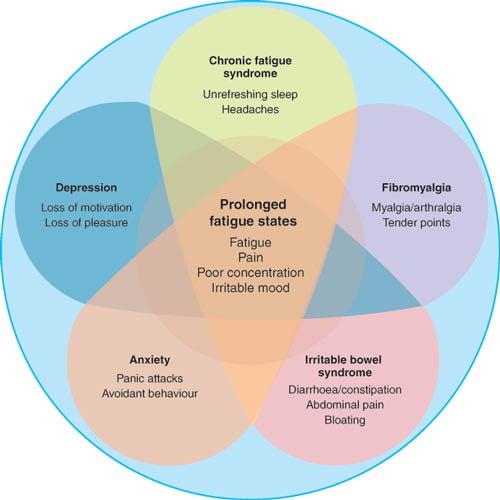Take this moment right now — seriously, take it!* The skies are lowering and my head is closing down. Yes, I can still make the bed and sort-wash-switch-dry-fold-put away the laundry and I ought to be grateful for that. And a friend called this morning and we laughed and the kids stopped by and they are wonderful and my husband and the dog didn’t ride off into the sunset in his pick-up BUT I had plans for today that required thinking and my brain isn’t working well enough to think and I am not grateful!
If my whole life were like today, I’d have a hard time convincing myself to stick around. To do so, I’d have to graciously accept that every day would be just like this one: maybe two productive hours in the morning for everything that requires any effort or initiative — planning meals, figuring out the bills, answering emails, making phone calls, etc. — all the usual responsibilities we all have of being who we are and living where we do. Then my brains depleted. Voluntary mental excursions — writing, leaving the house, practicing piano, answering letters — get shoved to the side where they jealously glower at me as my hours are consumed by romance novels and Facebook scrolling.
Terrible pain and constant nausea are, nowadays, rare for me, and I am grateful for that. A touch of vertigo, some localized discomfort — you’d think I had nothing to complain about. But I want to Do Things — fun things — and I can’t. Sometimes it gets me down.
I listened to Ted Hour program on NPR the other afternoon, and it just made me feel worse. (And her’s the entire Ted Talk by Jennifer Brea.)
Especially during turbulent weather, I can expect to experience strings of days where my life seems suspended. I wait out my allotted hours, unable to focus, or really, even  remember what I’m trying to do. I should expect this stuck-in-amber, outside-my-own-life state, but I never do. I always begin the day believing that today, this is the day the Lord hath given and I can do all the things I couldn’t do yesterday.
remember what I’m trying to do. I should expect this stuck-in-amber, outside-my-own-life state, but I never do. I always begin the day believing that today, this is the day the Lord hath given and I can do all the things I couldn’t do yesterday.
And, many days, that’s true. And sometimes those good days are in a long string, too.
I know more about this illness that dogs me than I did at the beginning of this year. This is because my daughter asked me to accompany her on a car trip to clinic specializing in chronic fatigue/fibromyalgia. This clinic requires all new patients to bring another person with them for their initial consultation.
My daughter drove to our house and spent the night. We left the next morning for Charlotte, North Carolina, and, in the late afternoon, found our Airbnb in a well-maintained neighborhood with lots of trees and birds.
Our Airbnb suite was over a newly constructed garage and workspace, up beige carpeted, interior stairs. A sign next to a chair at the bottom of the steps instructed us to leave our shoes by the door. We hauled our overnight cases and insulated cold packs (and my knitting) up the steps in our stocking feet. There was a big room with a kitchenette, TV and sofas, futon and windowsills and table and chairs, and a roomy bathroom and a bedroom, also with lots of natural light. The furnishings, too, seemed to be newer and chosen for inoffensive good taste but there were enough personal touches to make it a welcoming space. My daughter admired the round dining table, it’s glass top supported by the spreading branches of the metal tree that formed the table’s central column.
We made ourselves at home for the evening. We had hauled all our food with us. We are both on gluten-free and sugar-deprived diets and weren’t going to try to find a restaurant in this strange city. All our energy was reserved for visiting the doctor. We heated up our meals, read the books we’d brought, and went to bed.
The next morning, the route to the clinic took us through cute shopping areas, lovely neighborhoods, and multiple medical complexes, interspersed with one massive church after another. These astounding, huge buildings housed mainstream Protestant congregations, Catholics, and those self-labled “non-denominational” Christians (or “Christian factories,” as one long-ago acquaintance called them). The biggest church featured multiple entrances through the extensive lawns and satellite parking with numbered signs that reminded me of of the parking lots at the Richmond International Raceway.

Charlotte, North Carolina, probably boasts many attractions. However, our sight-seeing was limited to driving by these astonishing churches. We did go shopping at CVS in one of Charlotte’s up-scale shopping malls. My daughter filled a prescription and I bought a paperback. It was a nice CVS, but we have those here at home, too.
I remained in the examination room with my daughter for the initial consultation. The doctor walked in carrying a file with all the medical records my daughter had submitted ahead of time, as requested, as well as the numerous additional forms the clinic required. She looked up briefly, before taking a seat at the computer. “Were the lights on when you came into this room?” she asked.
“Yes,” my daughter said.
“Did you ask the nurse to turn them off?”
“That was me,” I said. Overhead lights usually irritate me. They don’t bother my daughter. Light and noise sensitivity, as we were shortly to learn, are just two of the many symptoms, conditions, and sensitivities that may be fellow travelers with a case of CFIDS.

The doctor had many additional questions for her patient, of course. My only useful contribution was to prod my daughter into a fuller description of her life beyond just the demands of her job.
During the doctor’s lengthy and detailed explanation of chronic fatigue syndrome, I heard several new things. I learned that crippling pain, like I experienced at the onset of my own illness, is not characteristic of CFIDS. Apparently I’ve had fibromyalgia from the beginning. I didn’t just develop it a year or so ago when I (mistakenly) thought I had shingles with the rash.
The doctor displayed a chart with a zig-zag to showed the course of CFIDS: steeply plunging and ascending in the first years and eventually becoming less steep but still zigging and zagging, up and down, but less deep and less high. My own gradual improvement over the years had lulled me into hoping I might someday outlive the disease. Nope. That is not in the cards.
I zoned out before the doctor finished her long explanation of the role of Vitamin D deficiency in CFIDS. (Maybe she wasn’t even talking about Vitamin D?) My daughter seemed to follow it better than I did, and just in case she didn’t, the doctor gave her a three-ring binder and a DVD so she could review everything on her own, at her own pace. Obviously, a lot of her patients wouldn’t be able to grasp all of the information at one sitting.
Before this doctor’s visit, when I heard that doctors were recommending aerobic exercise for people with chronic fatigue, it made me want to scream. (I didn’t actually scream, of course. I didn’t have the energy.) But the aerobic exercise this doctor was recommending was only five minutes of walking at a time! Plus gentle stretching exercises.
I was not surprised to find that CFIDS can rob a person of 30 IQ points. Thick brain fog makes life difficult.

The doctor stressed that a good night’s sleep is vital. Insomnia comes with the condition and several night of insomnia in a row, I know from experience, worsens other symptoms. Hence, the sleeping pills.
One welcome piece of information is that only 10-15% of children of patients also succumb to CFIDS, and almost all of them are girls. This relieved my anxiety for my youngest son. He is now about the same age as my daughter and myself each were when we were struck down with the disease.
I remained in the waiting room with my Kindle while my daughter underwent computer tests, coordination tests, the treadmill and a tilt-table. She passed out on the tilt-table. So I proved essential after all. I drove us back to the Airbnb. (Other patient reactions to these tests have included falling asleep, marked confusion, and vomiting.)
We spent another comfortable and uneventful night over the garage (our rating as guests? “quiet and nice”), and packed out in the morning before returning to the clinic where my daughter got back on the treadmill for one last test.
Then we headed north, out of the Land of Mammoth Churches, and back home.
That was some weeks ago. My daughter quit her job and is following the advice the doctor tailored just for her. She rests flat on her back for at least five minutes of each hour (sometimes it’s the whole hour) even when it is inconvenient or potentially embarrassing. She has a handicap parking permit. She now owns a wheelchair. She paces herself. Etc.
When she calls her voice is brighter and quicker than I’ve heard it in years. She’s adjusting to a changed life and changed expectations.
Would you be surprised that I am glad my daughter has a wheelchair? Well, I am glad. In a wheelchair she toured the Museum of Natural History with her brother and his young family. All that walking through the museum would have exhausted her. She would have crashed and lost a week to recovering. Instead, she wasn’t on her feet and she got to carry her niece on her lap.
Going to Charlotte, North Carolina, was well worth the effort it took.
You might be wondering, if I’m in such a bad place today how did I put this blog post together?
I took a three days.
And now I am grateful. I’m grateful I finished this post!
* apologies to Henny Youngman
Be steel Julia. Hug.
LikeLiked by 1 person
Thank you.
LikeLike
The CFIDS community is fortunate to have your articulate description of how it feels to have Chronic Fatigue Syndrome.
LikeLike
Thank you, Kathe, but the CFIDS community has much better spokesmen than me.
LikeLike